
Roots
The very act of concealing or adorning the crown, that part of ourselves which rises skyward, carries a profound weight. It is a gesture that transcends mere fashion or fleeting trend, reaching into the deepest chambers of collective memory and individual expression. For many, hair is a direct extension of being, a personal narrative spun from strands.
When this intimate part of self becomes veiled, it enters a dialogue with the world, speaking volumes without uttering a sound. This quiet communication reveals connections to heritage, adherence to belief systems, and assertions of selfhood in a world often too eager to categorize or diminish.
Consider the intricate dance between scalp and strand, the biological marvel that is textured hair. Each coil, each curve, holds a unique story of resilience and adaptation. The hair shaft, composed primarily of keratin, emerges from the follicle, its shape dictated by the elliptical or flat nature of that follicle.
For those with highly coily or kinky hair, the elliptical follicle creates a ribbon-like strand, which naturally forms tight spirals. This structural characteristic means such hair often requires specific care, as its twists and turns can make it more prone to dryness and breakage compared to straighter textures.
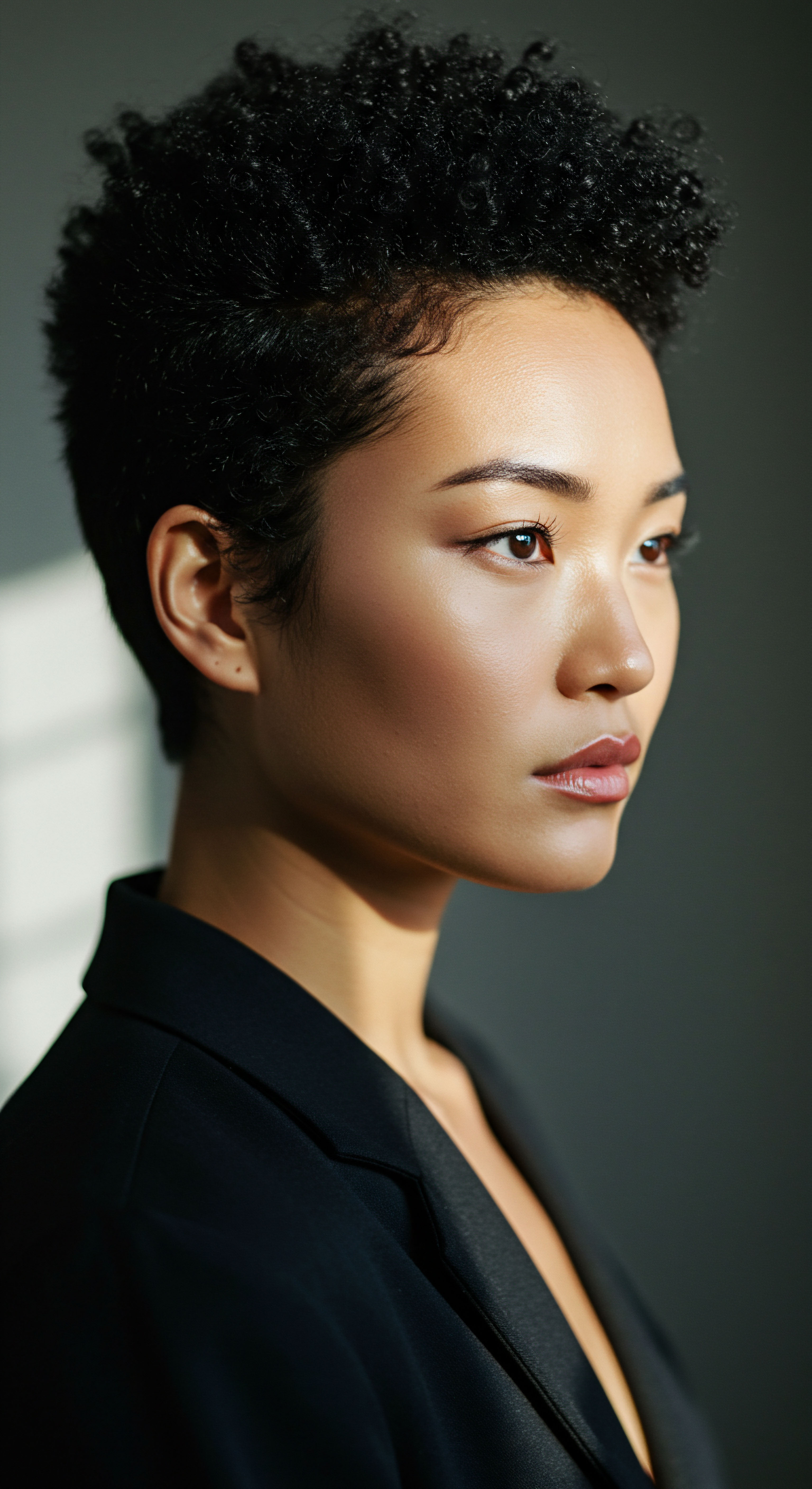
The Anatomy of Textured Strands
A closer look at the anatomy of textured hair reveals its distinctive qualities. The outermost layer, the Cuticle, consists of overlapping scales. In coily hair, these scales tend to lift more readily, contributing to its inherent thirst for moisture.
The middle layer, the Cortex, holds the pigment and provides strength, while the innermost Medulla, often absent in finer hair, contributes to overall thickness. The natural tendency of textured hair to curl or coil influences how it interacts with the environment, how products penetrate, and, significantly, how it is cared for and, indeed, how it is covered.
- Follicle Shape ❉ An elliptical or flat follicle shape produces highly coily or kinky hair strands.
- Cuticle Layer ❉ The outermost protective layer, prone to lifting in textured hair, allowing for moisture loss.
- Cortex Strength ❉ The central region providing elasticity and strength, holding the hair’s pigment.
Understanding these foundational elements is not simply academic; it forms the bedrock for comprehending why certain hair practices, including the wearing of coverings, arose and persisted within various communities. The inherent needs of textured hair often dictate styling choices, and throughout history, head coverings have served both practical and symbolic roles, offering protection from elements, preserving styles, and signifying status or belonging.
Hair coverings, in their varied forms, offer a silent language of identity, connecting individuals to their cultural heritage and personal narratives.
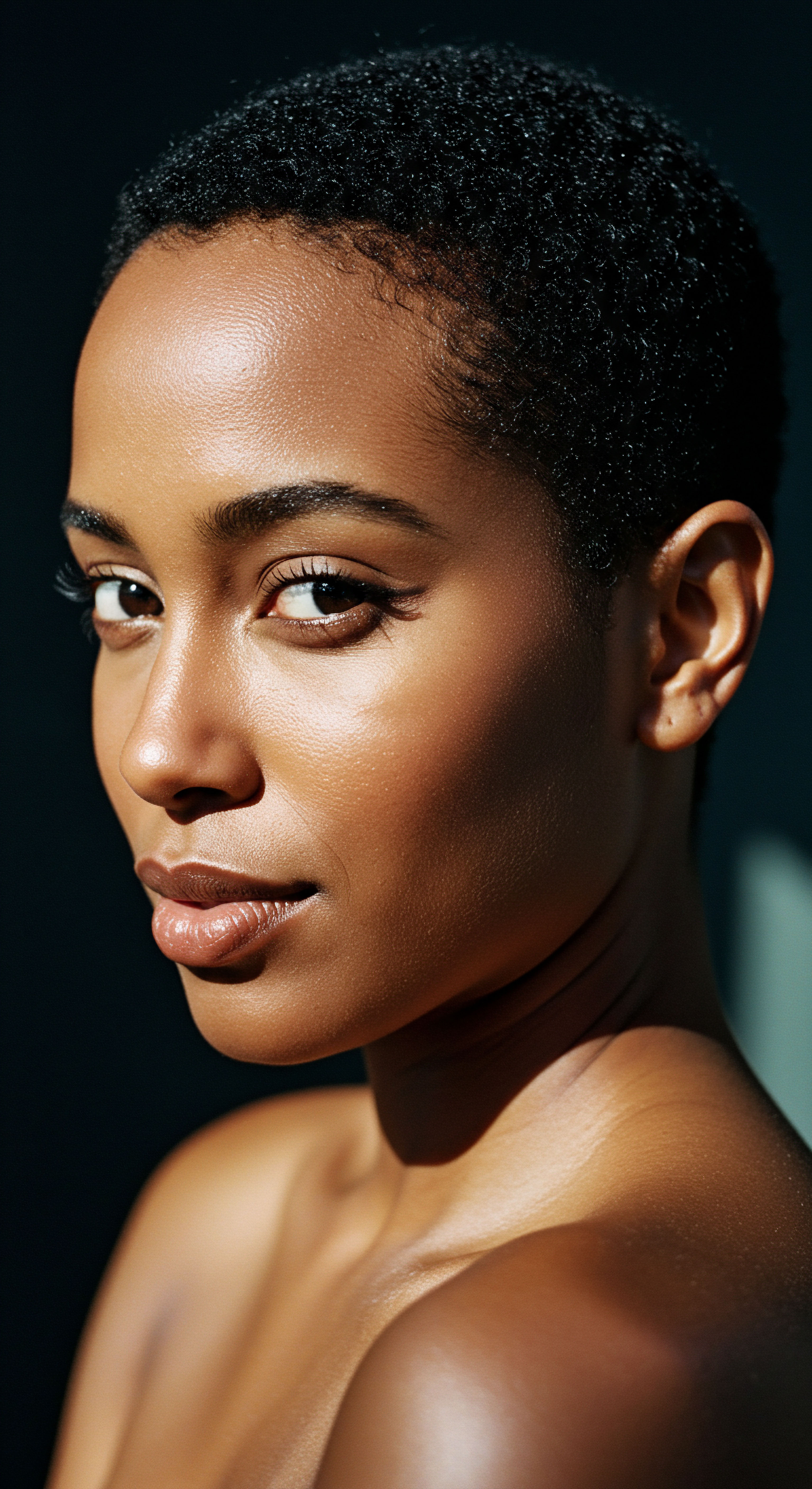
Hair Classification Systems and Their Cultural Ties
The very language we employ to describe textured hair has evolved, seeking to capture its diverse forms. While scientific classifications address structural differences, common parlance often leans on systems like the Andre Walker Hair Typing System, which categorizes hair from straight (Type 1) to tightly coiled (Type 4). Within Type 4, distinctions are made between 4a, 4b, and 4c, representing increasing levels of curl tightness and zig-zag patterns. This lexicon, though sometimes debated, helps to articulate the vast range of textures, influencing product development and styling techniques.
Yet, beyond these technical descriptions, lies a deeper cultural naming. Consider the terms of endearment or description used within families and communities to speak of hair – “good hair,” “nappy,” “kinky” – terms that carry historical weight, sometimes of oppression, sometimes of reclamation. These terms, often tied to societal perceptions and beauty standards, underscore how intimately hair is bound to cultural identity, shaping not only how hair is worn but also how it is concealed or adorned.
| Hair Type Type 3a |
| Description Loose, buoyant curls |
| Common Characteristics Well-defined spirals, shiny, prone to frizz |
| Hair Type Type 3c |
| Description Tight, corkscrew curls |
| Common Characteristics Densely packed, pencil-sized, often voluminous |
| Hair Type Type 4a |
| Description Tightly coiled S-pattern |
| Common Characteristics Defined coils, visible S-shape, fine or wiry strands |
| Hair Type Type 4b |
| Description Tight, Z-pattern coils |
| Common Characteristics Less defined, zig-zag pattern, fluffy appearance |
| Hair Type Type 4c |
| Description Densely packed Z-pattern coils |
| Common Characteristics No defined pattern, shrinks significantly, most fragile |
| Hair Type This table provides a simplified view of textured hair types, recognizing that individual hair patterns often exhibit variations. |
The decision to cover one’s hair, then, is rarely made in a vacuum. It stems from a rich interplay of personal preference, religious adherence, community norms, and a profound awareness of one’s place within a broader cultural framework. The covering itself, whether a simple scarf or an elaborately tied headwrap, becomes a canvas for expressing these layers of identity, a visual shorthand for belonging.
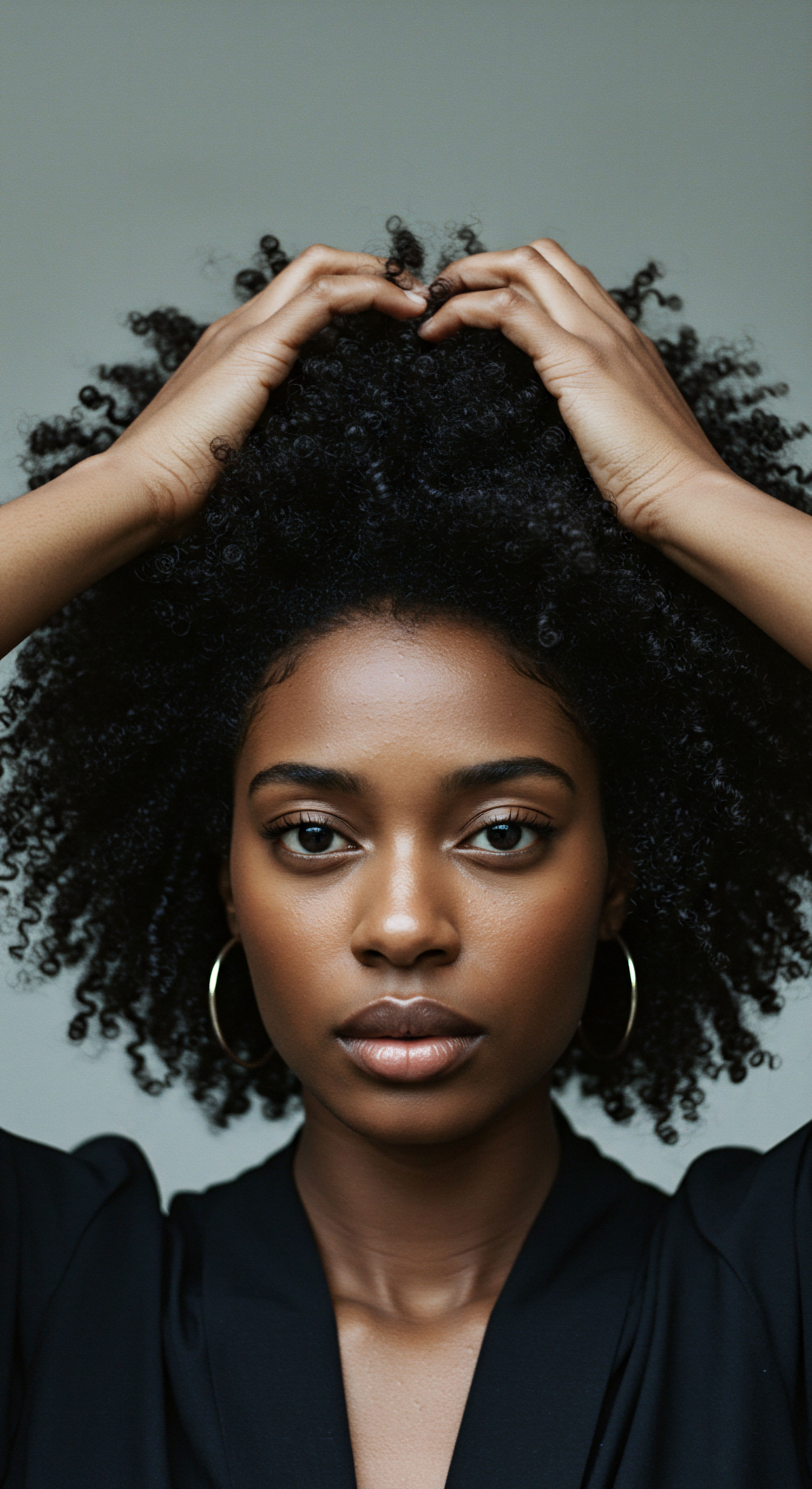
Ritual
Stepping from the inherent qualities of hair to the deliberate actions we take to care for it brings us into the realm of ritual. The daily and periodic practices surrounding hair are not merely routines; they are often acts of devotion, preservation, and self-expression. For those with textured hair, these practices frequently involve protective measures, shielding delicate strands from the rigors of the environment or the stress of manipulation. Hair coverings, in this context, ascend beyond simple adornment to become essential components of a wellness regimen, a gentle shield for the crown.
Consider the widespread adoption of Protective Styling within textured hair communities. Styles such as braids, twists, and cornrows gather the hair, minimizing exposure and reducing the need for daily styling. These styles can last for weeks, offering respite to the strands and promoting length retention.
Head coverings, like satin-lined bonnets or silk scarves, extend the life of these styles, guarding against friction and maintaining moisture. This practice is a testament to the understanding that consistent, gentle care leads to stronger, healthier hair.
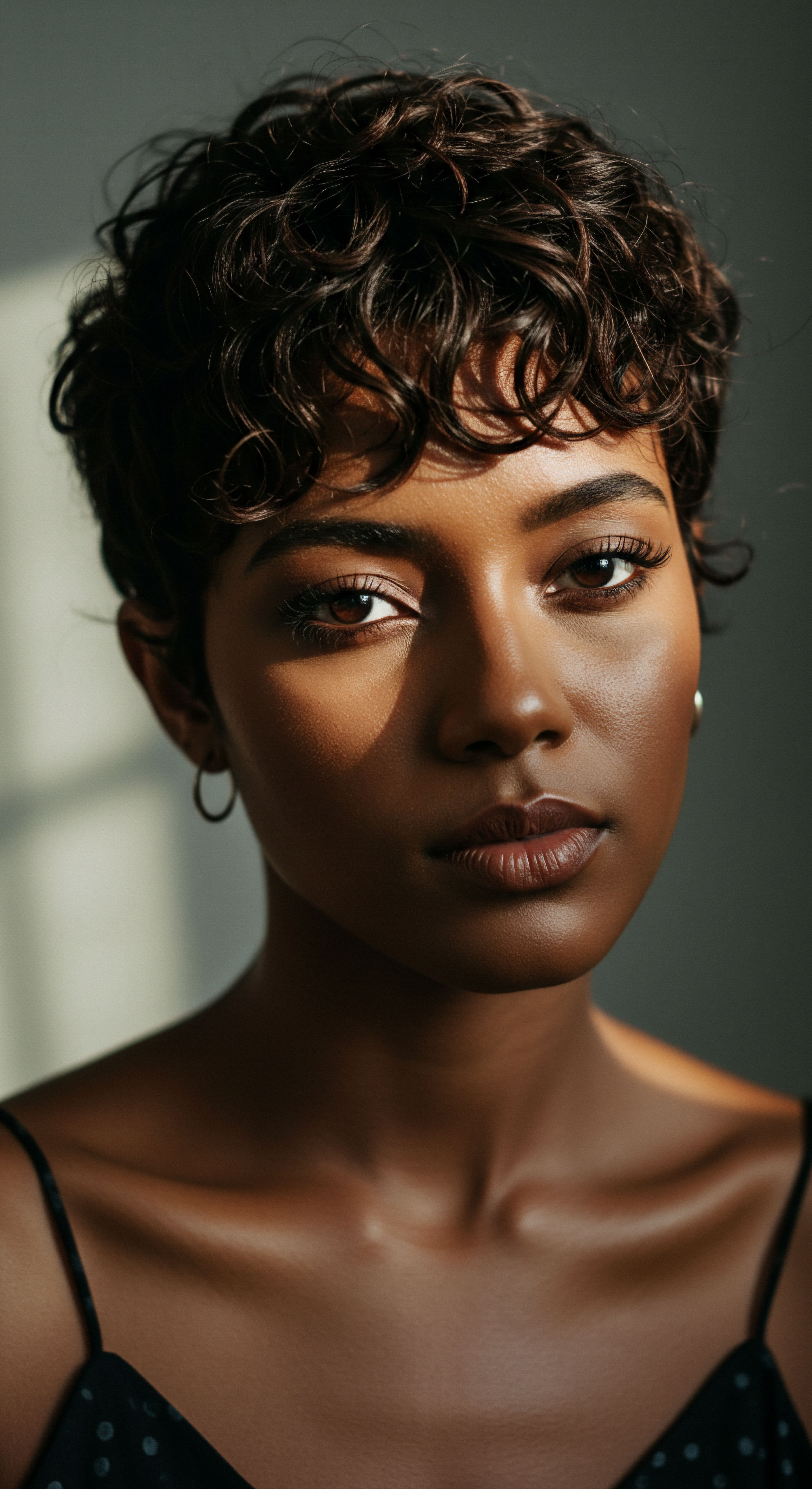
Protective Styling as a Shield
The practice of protective styling, deeply ingrained in many cultures, serves multiple purposes. It offers a means to manage hair, to prevent tangles and breakage, and to encourage growth by reducing external stress. When hair is tucked away in braids or twists, it is less exposed to environmental aggressors such as harsh winds, dry air, or excessive sun.
This physical protection is a practical aspect of hair coverings. A satin-lined bonnet, for instance, prevents the hair’s natural oils from being absorbed by abrasive pillowcases, preserving hydration and preventing friction-induced frizz and breakage.
Beyond the practical, there is a quiet strength in these styling choices. They allow for periods of rest for the hair, periods where it can simply be, undisturbed. This approach contrasts sharply with the often-demanding routines associated with frequent heat styling or chemical treatments, instead promoting a gentler, more sustainable path to hair wellness.
The daily rituals of hair care, especially with textured strands, transform protective coverings into essential tools for preserving both health and intricate styles.
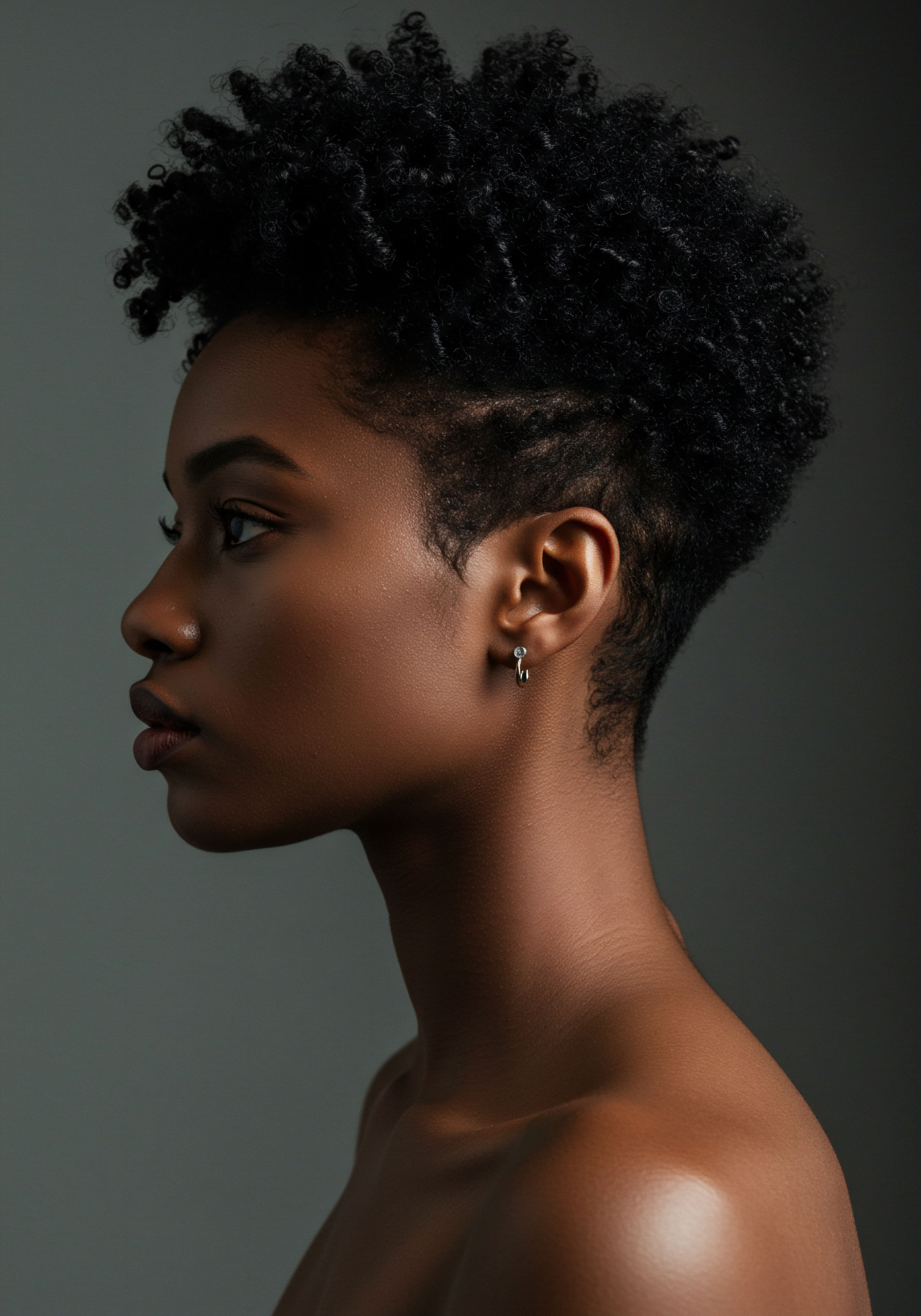
Nighttime Sanctuary and Bonnet Wisdom
The hours of sleep, often overlooked, are a critical period for hair health. The tossing and turning against conventional pillowcases can cause significant friction, leading to frizz, breakage, and moisture loss. This is where the wisdom of the Bonnet, the scarf, or the satin pillowcase comes to the fore. These simple accessories create a sanctuary for the hair, allowing it to glide rather than snag, retaining its moisture content and preserving the integrity of styling.
The widespread use of bonnets, particularly within Black communities, speaks to generations of accumulated knowledge regarding textured hair care. It is a ritual passed down, a silent understanding of what these unique strands require to thrive. The choice of material, typically satin or silk, is deliberate, as these fabrics possess a smooth surface that minimizes friction and does not absorb moisture from the hair, unlike cotton. This seemingly small act of covering one’s hair at night contributes significantly to its long-term vitality.
Consider the impact of consistent bonnet usage:
- Moisture Retention ❉ Hair remains hydrated, reducing dryness and brittleness.
- Friction Reduction ❉ Less breakage and split ends, promoting length retention.
- Style Preservation ❉ Extends the life of braids, twists, and wash-and-go styles, reducing daily manipulation.
The ritual of preparing one’s hair for sleep, often involving gentle detangling, moisturizing, and then carefully enclosing it within a soft covering, embodies a deep respect for the hair itself. It is a proactive step, a conscious choice to nurture and protect, aligning with a broader philosophy of holistic self-care. This daily ritual becomes a quiet assertion of care, a demonstration of understanding the delicate nature of textured strands.

Relay
Moving beyond the personal rituals, hair coverings enter a more expansive dialogue, one that echoes across centuries and continents. The choice to cover one’s hair often transcends individual preference, becoming a powerful statement of cultural affiliation, spiritual devotion, or social positioning. These coverings serve as a visual lexicon, communicating complex messages about identity, community, and tradition.
To comprehend the full scope of how hair coverings signify cultural identity, one must consider the historical and societal pressures that have shaped their usage. Sometimes, these coverings arose from communal norms or religious precepts, serving as markers of modesty, marital status, or spiritual commitment. Other times, they were imposed, instruments of control designed to strip individuals of their autonomy and visible markers of identity. Yet, even under duress, the human spirit found ways to reclaim and redefine these coverings, transforming them into symbols of resistance and resilience.
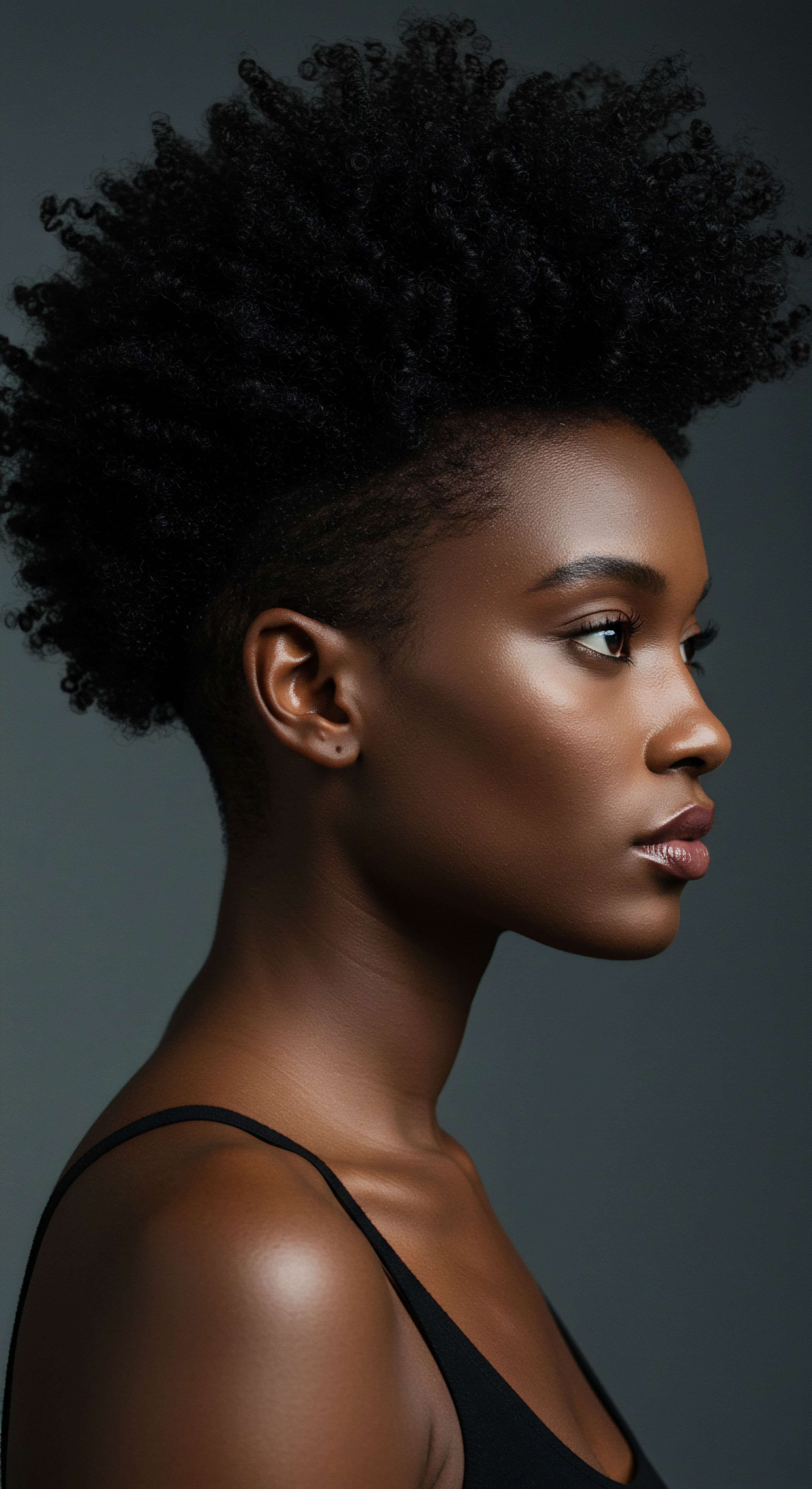
Historical Reclamation of Identity Through Adornment
A poignant illustration of this dynamic is the Tignon Laws enacted in colonial New Orleans in 1786. These laws, promulgated by Governor Esteban Rodríguez Miró, mandated that free women of color in Louisiana wear a tignon, a type of head covering or kerchief. The decree aimed to suppress their perceived beauty and social standing, which, in the eyes of the white ruling class, challenged the established social hierarchy.
These women, many of whom were of mixed heritage, often wore elaborate hairstyles that were seen as attractive and influential, drawing the attention of white men and disrupting racial and class distinctions. The law was a direct attempt to mark them as distinct from white women, visually diminishing their presence in public spaces.
However, the women of New Orleans responded with an extraordinary act of cultural defiance. Instead of allowing the tignon to serve as a symbol of subjugation, they transformed it into a vibrant expression of their identity and artistic flair. They donned tignons crafted from luxurious fabrics such as silk and lace, adorned with jewels, feathers, and intricate patterns. The tying methods became increasingly elaborate, turning what was intended as a mark of oppression into a statement of elegance and resilience.
This subversion of the law allowed them to reclaim agency over their appearance and, by extension, their identity. The tignon, initially a symbol of forced distinction, became a powerful emblem of pride, creativity, and enduring spirit in the face of systemic prejudice. This historical instance underscores the profound human capacity to find agency and expression even within the most restrictive circumstances, using a mandated covering as a canvas for cultural assertion.
Hair coverings can carry deep historical weight, often serving as a site of both imposed control and powerful cultural reclamation.
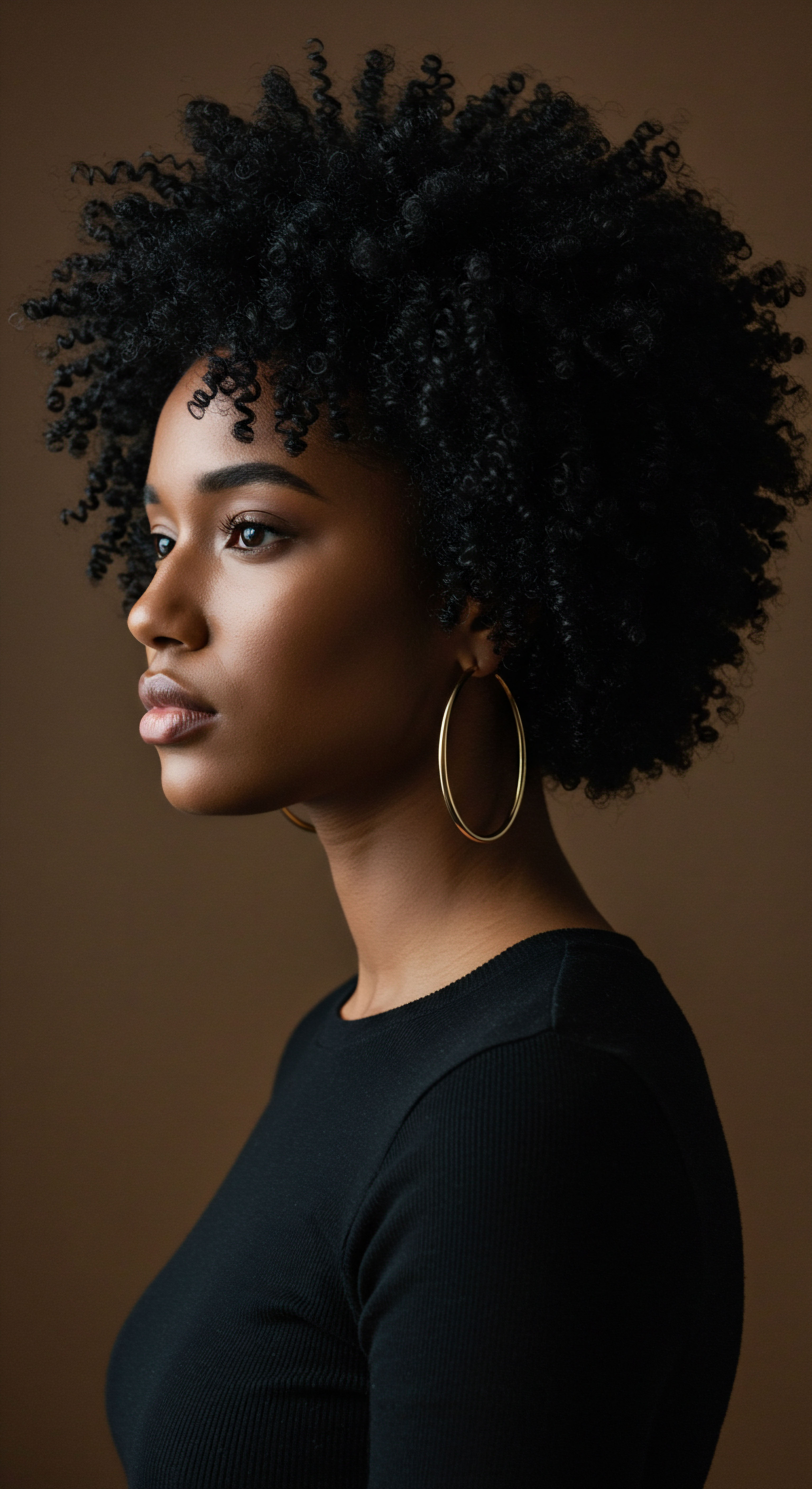
Global Expressions of Covered Hair
Across diverse cultures, hair coverings continue to convey a multitude of meanings. In many Islamic traditions, the Hijab is worn by women as an expression of modesty and religious devotion, a visible commitment to their faith. The styles and colors of hijabs vary widely, reflecting regional customs and personal preferences, yet the underlying principle of modesty remains a unifying thread.
Similarly, the Sikh Turban, worn by men and some women, is a sacred article of faith, symbolizing equality, honor, and spirituality. It represents a commitment to the Sikh way of life and is never removed in public, serving as an unmistakable marker of their religious identity.
Beyond religious observance, head coverings signify social status or life transitions. In parts of West Africa, the elaborate Gele is worn by women for special occasions, its size and complexity often indicating wealth or social standing. For married women in some cultures, covering their hair signifies their new status and respectability within the community. These practices demonstrate how a simple piece of fabric can carry layers of meaning, interpreted differently depending on context and cultural lens.
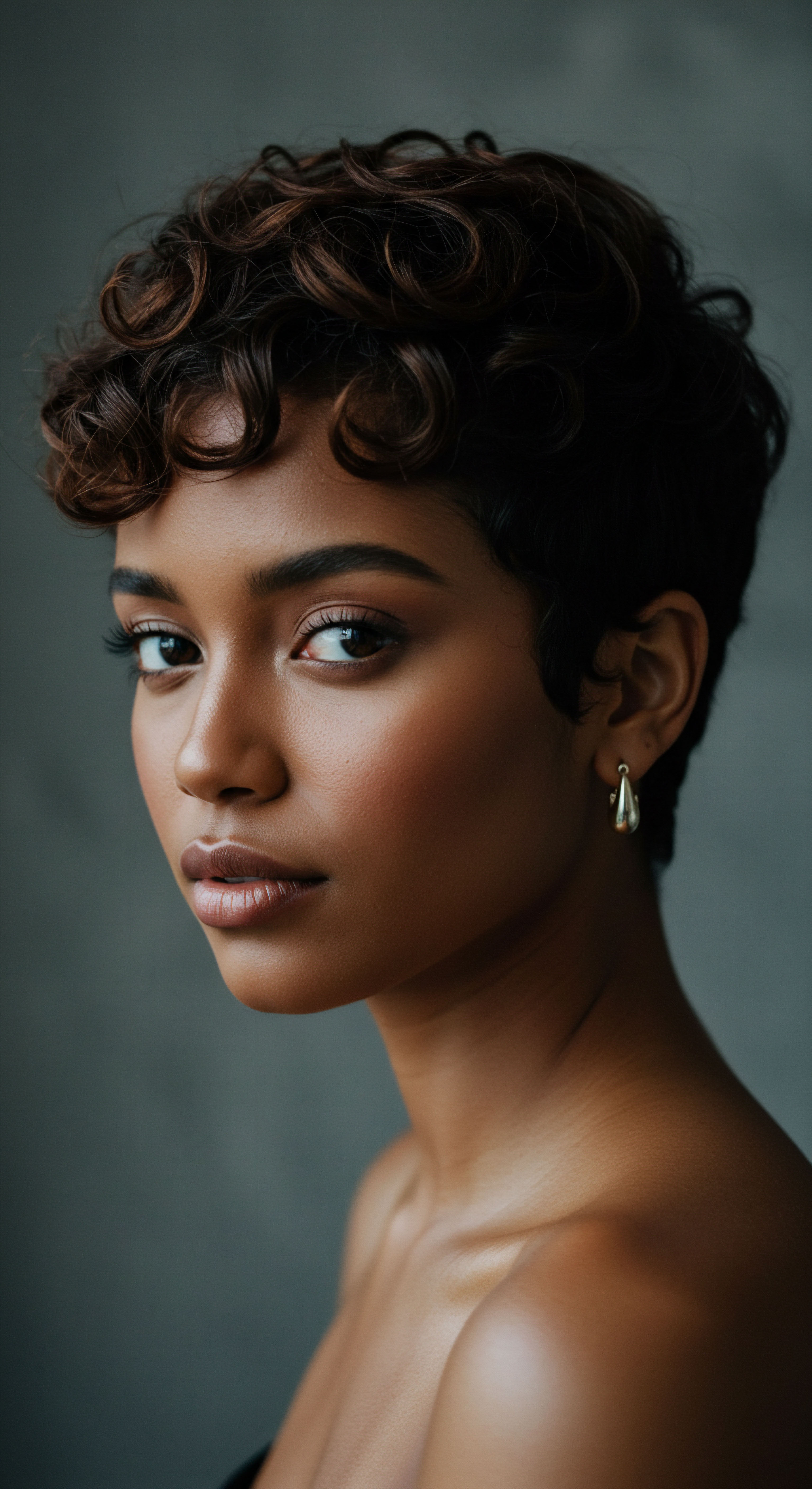
Coverings as Communal Bonds
The act of wearing a hair covering can also forge a powerful connection to community. It can signal membership in a specific group, creating a visible bond among those who share similar beliefs or heritage. For individuals living in diasporic communities, wearing traditional head coverings can be a vital way to maintain a connection to their ancestral lands and customs, particularly in environments where their cultural practices might otherwise be diluted. It becomes a portable piece of home, a tangible link to identity.
This communal aspect extends to shared knowledge and care. The methods of tying a gele, the ways of securing a hijab, or the specific techniques for preparing hair for a turban are often passed down through generations. This intergenerational transfer of knowledge reinforces cultural ties, ensuring that the significance of these coverings, and the rituals surrounding them, persist. The covering, then, is not merely an object; it is a living tradition, continually reinterpreted and passed along.
The complex interplay between personal choice, historical context, and communal expectation makes the study of hair coverings a compelling lens through which to examine human identity. They are at once personal adornments and public declarations, silent communicators of deep-seated values and belonging.
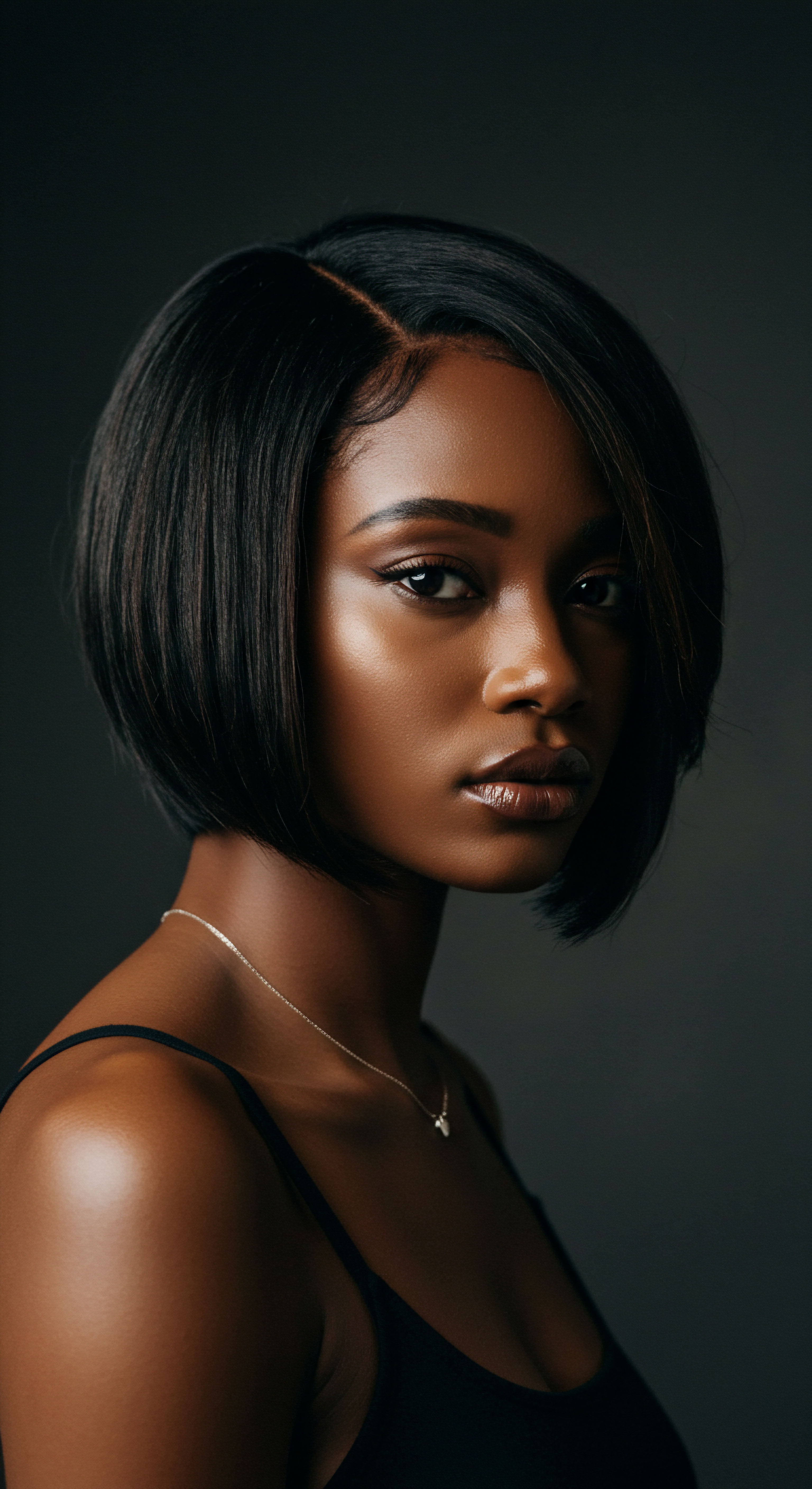
Reflection
The journey through hair coverings as markers of identity reveals a remarkable truth ❉ beneath the surface of fabric and style lies a profound expression of self and collective memory. Each wrapped strand, each chosen cloth, tells a tale of resilience, devotion, and belonging. The meanings are not static; they evolve, adapting to new contexts while holding fast to ancient echoes. This enduring practice serves as a quiet reminder that our physical presentation often carries the weight of history, the warmth of community, and the whisper of individual spirit.

References
- Bell, Carey. “The Tignon Laws ❉ Hair and Headwraps in Antebellum New Orleans.” Journal of Southern History, vol. 72, no. 1, 2006, pp. 101-124.
- Gale, Kathleen. The Headwrap ❉ A Cultural and Historical Exploration. University of California Press, 2018.
- Harris, J. A. Hair Story ❉ Untangling the Roots of Black Hair in America. St. Martin’s Press, 2001.
- Rastogi, Nina. Identity and Adornment ❉ The Sikh Turban in Contemporary Society. Bloomsbury Academic, 2019.
- Tarlo, Emma. Visibly Muslim ❉ Fashion, Modernity, and the Headscarf. Berg, 2010.
- Walker, Andre. Andre Talks Hair. Simon & Schuster, 1997.